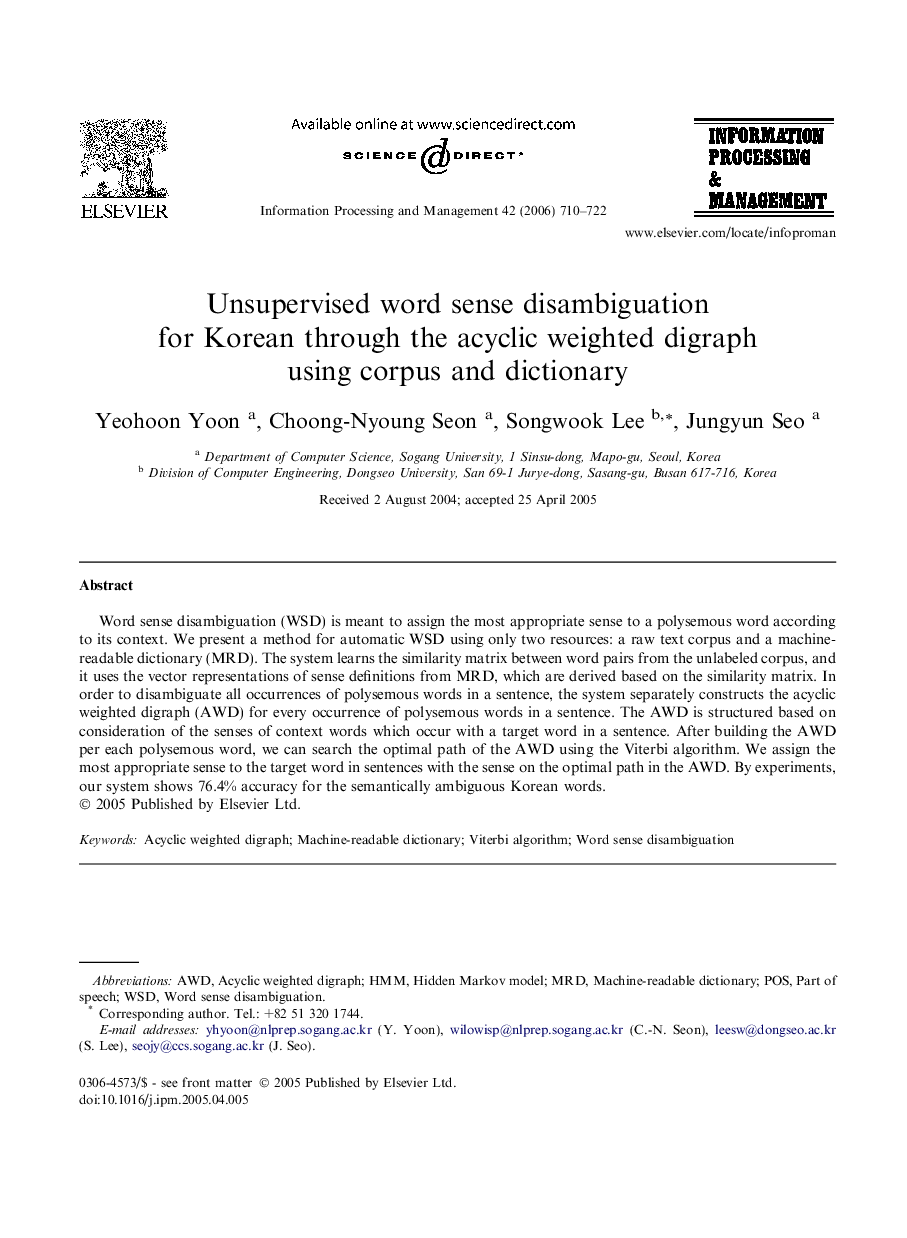| Article ID | Journal | Published Year | Pages | File Type |
|---|---|---|---|---|
| 516035 | Information Processing & Management | 2006 | 13 Pages |
Word sense disambiguation (WSD) is meant to assign the most appropriate sense to a polysemous word according to its context. We present a method for automatic WSD using only two resources: a raw text corpus and a machine-readable dictionary (MRD). The system learns the similarity matrix between word pairs from the unlabeled corpus, and it uses the vector representations of sense definitions from MRD, which are derived based on the similarity matrix. In order to disambiguate all occurrences of polysemous words in a sentence, the system separately constructs the acyclic weighted digraph (AWD) for every occurrence of polysemous words in a sentence. The AWD is structured based on consideration of the senses of context words which occur with a target word in a sentence. After building the AWD per each polysemous word, we can search the optimal path of the AWD using the Viterbi algorithm. We assign the most appropriate sense to the target word in sentences with the sense on the optimal path in the AWD. By experiments, our system shows 76.4% accuracy for the semantically ambiguous Korean words.
